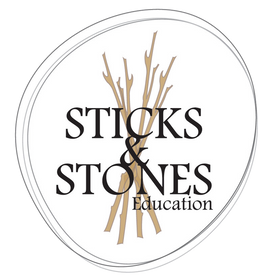
Learning Areas in the Early Childhood Classroom
Learning Areas in the Early Childhood Classroom are a traditional method to plan for children's development and learning. Through the creation of learning areas or learning centres such as Block Corner or Art Area or Book Corner helps educators to resource spaces, hone their reflecting. Children are also able to feel a sense of consistency and predictability and this supports a sense of security in the learning environment.
While there are some fantastic philosophies and practices that may move away from this more tradional way of planning, as an early childhood teacher, this is the method that I find works well for me as a practicing teacher and my students.
What is Happening out in the Early Childhood Education and Care Sector?
I see many posts on social media pages asking for help planning in a babies, toddler or preschool setting. Many educators, despite holding qualifications and some experience in an early learning setting, are anxious about ‘getting it wrong’. I comment and support where I can, but the posts keep on coming and educators continue to feel lost or overwhelmed. While it is certainly the role of the Educational Leader and the Nominated Supervisor to support their teams in planning for early learning and development, no one wants to admit they need help or possibly don’t know how to do their job.
I have been inspired to create a series of publications to support early childhood educators and teachers in designing and creating early learning spaces within their services and classrooms, both indoors and out.
The EYLF and Learning Areas in the Early Childhood Classroom
As educators we want our classrooms to be interesting and engaging spaces for young children. The Early Years Learning Framework (EYLF) formally introduced Australia to the notion of intentional teaching. In the second edition of the EYLF it is now referred to as Play-based learning and intentionality. They are defined as follows:
Intentionality: is being thoughtful and purposeful in actions and making decisions and is something that both children and educators can do. Children are intentional in their thinking, ways of communication and learning and at times lead their own learning and the learning of others. Educators are intentional in the roles they take in children’s play and the way they intentionally plan the environment and curriculum experiences. (EYLF pg 66).
Play-based learning: a context and a process for learning through which children organise and make sense of their social worlds, as they engage actively with people, objects and representations (EYLF pg 67).
How can educators support children's learning through play with intention?
One of the most effective ways to support children’s learning is through rich learning spaces. By offering play based learning with intentionality sitting behind our professional decisions children thrive.
This publication is for educators who want some support in designing these spaces and making connections to the Early Years Learning Framework. Sometimes educators need support and reassurance that they are on the right track. Children learn best through play that is engaging and interest based.
Young children are hands-on learners who learn through their senses of sight, touch, feel, smell, and taste. Places that support children to experiment and be creative and innovative support children’s self directed learning.
Children build their confidence when they engage in self-directed play and learn that they are competent and capable learners. By playing in learning centers, children develop confidence in their learning environment and are able to work on their own, with a peer, or in small groups where they can develop their social skills.
The learning areas or leanring opportunies that I have identified and planned for in my early learning setting are:
- Home Corner
- Pretend Play - Interest Based (doctors office, hospital, cafe, shop, market, pet store, etc.)
- Block Corner
- Area Area/Art Studio
- Sensory Play
- Sand + Water Play
- Book Corner / Class Library
- Music + Sound Centre
- Writing Table
- Drawing Table
- Science + Nature Table
- Quiet Space / Corner
- Puzzles + Group Games
- Manipulatives / Small blocks
- Sustainability
- Culture + Geography
- Playdough Table
- Small World Play
- STEM Table
- Doll Play
- Doll’s House
- Loose Parts Play
- Gardening
- Nature Play
- Routines & Rhythms + Agency + Independence
- Mud Kitchen
- Obstacle Course
- Group Times / Meetings / Circles (music, movement, songs, games)
- Literacy + Numeracy
- Fine Motor Play
- Gross Motor Play
- School Readiness
Reflect upon the learning spaces in your early learning settings and classrooms
When you make a list of the learning areas in the early childhood classroom and the learning opportunities in your space, and look at it like this, it is quite exhausting! Now do I plan for these each week? No. Do I plan for them each month? Not really. I make a general plan for children, and then tweak them as we go forth in the year. The team and I are able to explore these changes in our teaching reflecitons. I find that this method works well for me. This will also have to be an entirely different publication that is already in the works. More on that later!
In the meantime ach learning area, will be written as an independent e-guide that will be available on our website. Stay tuned! I'm so very excited with this new project!

















